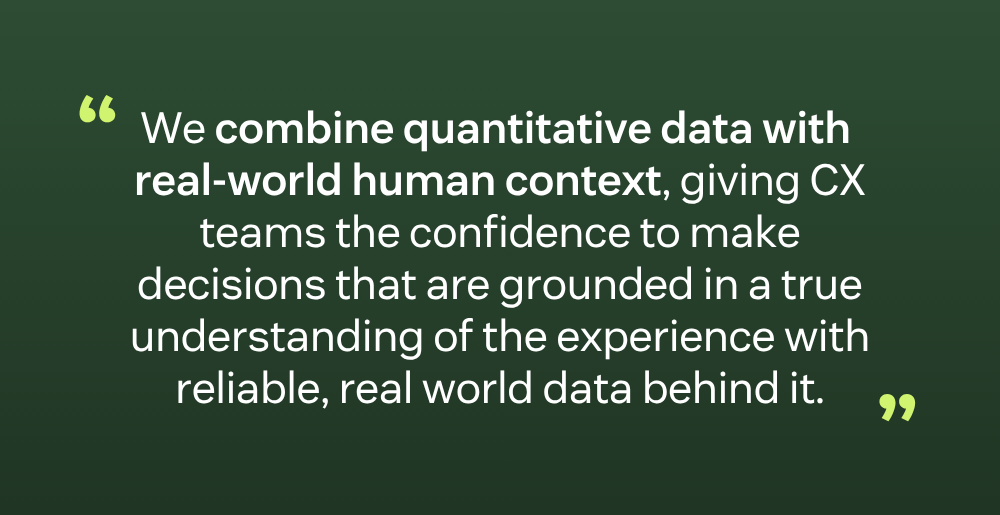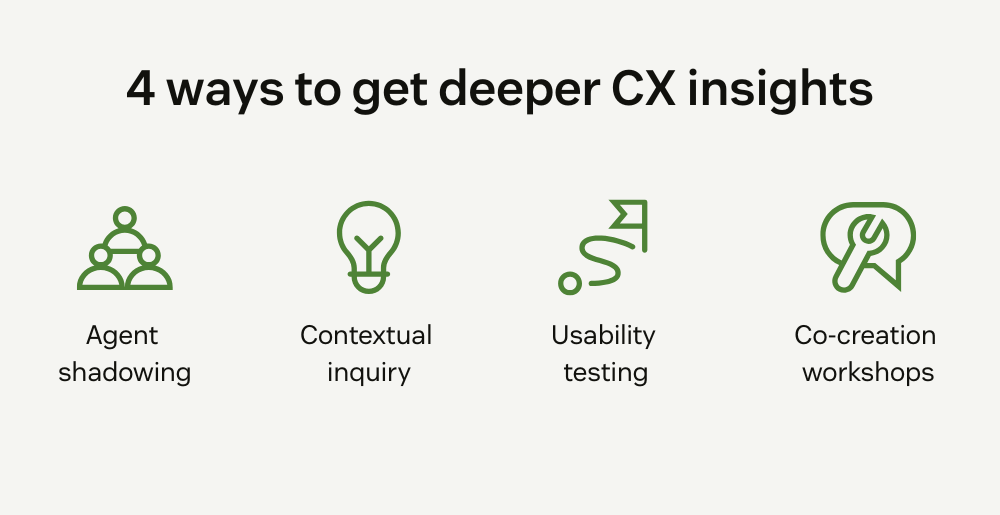Article • 5 min read
3 ways UX Research strengthens your CX strategy
UX Research uncovers the why behind customer behaviors, turning surface-level metrics into strategies that actually improve the journey.
Reggie Murphy
Senior Director, UX Research at Zendesk
Zuletzt aktualisiert: October 6, 2025
two CX leaders
Most CX strategies are built around outcomes like improving CSAT, raising NPS, or reducing churn. These metrics matter, but they don’t always explain why customers feel the way they do or how they experience the journey.
That’s where UX Research is frequently overlooked. Too often, I’ve seen it viewed internally as a product function—focused on usability testing or feature validation—rather than as the true strategic lever it can be for customer experience. When treated this way, I’ve seen CX strategies become reactive, driven by surface-level data, and missing the deeper insights needed to design journeys that truly work for customers.

The irony is that UX Research is built for this exact challenge. Researchers are trained to uncover not just what customers say, but what they actually do, why they behave that way, and how they experience interactions across digital and human touchpoints. When CX leaders bring this expertise into their strategy, they can move beyond fixing broken moments to creating experiences that feel seamless and intuitive.
At Zendesk, my research team partners across the organization every day to build better customer journeys. The insights we uncover empower teams company-wide to design strategies grounded in customer needs, shaping everything from how our CX team engages with customers to how our product delivers value.
Here are three ways to make UX research a cornerstone of your CX strategy:
1. Connect experiences across the journey
CX strategies are too commonly built around isolated touchpoints—a support call here, an onboarding flow there, a renewal reminder later. But customers don’t live their experiences in neat little boxes. They live the whole journey. When one interaction feels disjointed, it casts a shadow over everything else. A smooth support call can’t erase the frustration of a clunky digital flow, and a shiny new product feature won’t make up for a confusing onboarding process.
This is where UX Research makes the difference. We don’t just listen to what customers say—we watch how they move, pause, and stumble through the journey. We tune into the quiet signals: the hesitation before clicking, the puzzled look at a vague label, the irritation sparked by a badly timed email. These are the moments where customers second-guess or work harder than they should, and they speak volumes.
During a recent set of in-person research sessions, my team observed firsthand how our customers use Zendesk tools, the environments they work in, and how their teams operate. Sitting side by side with our customers gives us clarity on where our product truly shines in their daily work—and just as importantly, where there’s room to grow. We uncovered struggles and feedback that doesn’t necessarily surface when conducting virtual research.
When we surface these hidden insights, siloed touchpoints transform into a connected story that reflects the customer’s perspective. With that clarity, CX leaders can stop chasing problems after the fact and start designing smoother, more intentional journeys—addressing both the big, obvious breakdowns and the subtle frictions that quietly shape how customers feel along the way.
2. Make evidence-based decisions
CX organizations are rich in metrics—CSAT scores, NPS trends, churn rates, and a flood of customer feedback. While this data is undoubtedly valuable in showing the outcomes of our work, it’s only part of the picture and often misses the deeper root causes. When this happens, I’ve seen leaders fill the gaps with guesswork and untested hypotheses—or worse, chasing surface-level improvements in the short term without the insight they need to build a stronger roadmap.
This is where UX Research steps in and strengthens CX strategy. We dig beneath the numbers to uncover the stories, struggles, and even wins behind the data—why customers are dissatisfied, what drives their behaviors, and how proposed solutions might actually land in practice. We combine quantitative data with real-world human context, giving CX teams the confidence to make decisions that are grounded in a true understanding of the experience with reliable, real world data behind it.
Our toolkit helps ensure the right approach for the right insights: thematic analysis surfaces recurring pain points, behavioral research highlights where and why customers drop off or escalate, and prototype testing shows how changes are likely to land before major investments. Together, these methods cut down guesswork, guide smarter decisions, and deliver improvements that not only move the metrics but also create experiences customers can genuinely feel are better.
3. Bridge CX strategy with product reality
It’s easy to promise “seamless service” or “AI-powered efficiency” in a strategy deck. But these buzzwords ring hollow if you aren’t tracking what the experience is actually like – how your products, processes, and tools work together when customers need them most.

UX Research puts strategies to the test, revealing how they hold up in practice. It shines light on the hidden complexities that undermine customer and agent experiences while also highlighting the moments of delight worth amplifying. Take our work with Copilot, for example: we’ve seen through research how agents lean on AI suggestions to speed responses and resolve tickets more confidently. At the same time, those same sessions gave us a better understanding of where our steps were unclear, where agents needed more support and provided some ideas for our future roadmap.
To get to those insights, we rely on a range of methods:
- Agent shadowing: Observing agents handle tickets shows where clunky tools or unclear processes slow them down—directly impacting the customer experience.
- Contextual inquiry: Sitting side-by-side as customers navigate resetting passwords, managing billing, or navigating support channels highlights whether everyday tasks are as smooth as intended.
- Usability testing: A self-service flow might look efficient on paper, but testing can reveal customers still escalate to agents because the steps aren’t clear.
- Co-creation workshops: Bringing customers into the design process ensures solutions align with their real needs before launch.
These methods give product and CX teams the evidence they need to act—streamlining what’s confusing, doubling down on what works, and ensuring strategies don’t just sound good on paper but actually deliver in practice.
The bottom line
As expectations rise and tools evolve, UX Research helps CX leaders stay grounded, relevant, and forward-looking. Together, CX strategy and UX Research form a powerful partnership that enables organizations to design experiences that build trust, inspire loyalty, and move the business forward.
